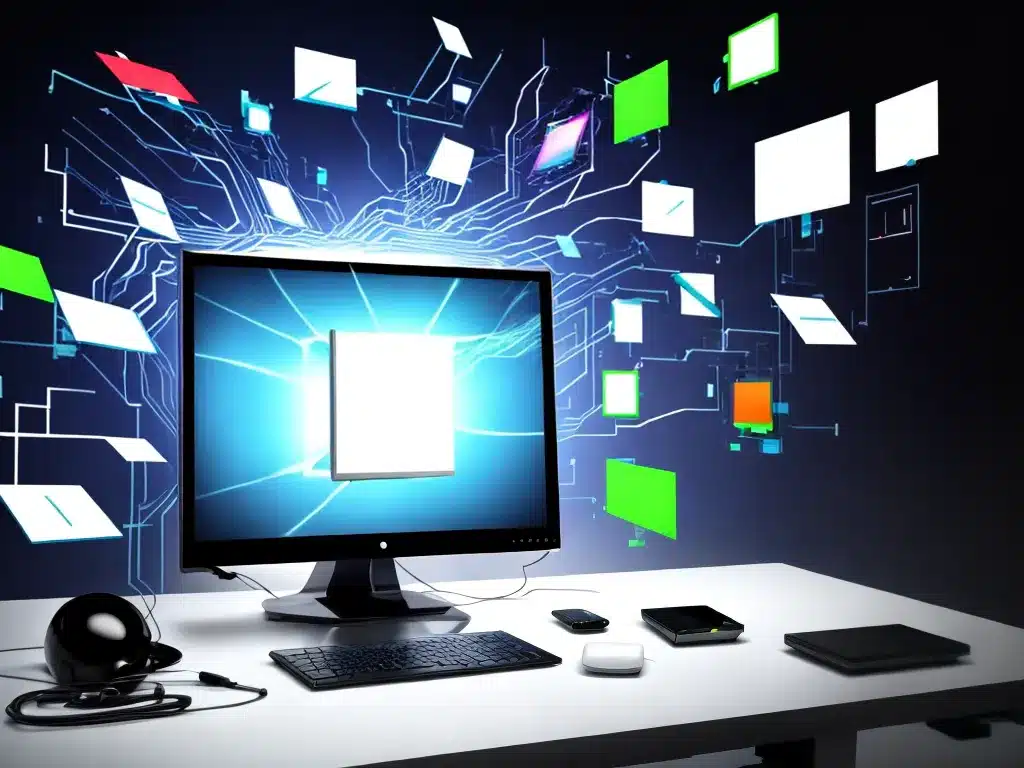
1. Malware
Malware, short for “malicious software”, is one of the leading causes of computer crashes. Malware includes viruses, worms, trojans, spyware, and other harmful programs that can damage your computer’s software and hardware.
Malware can slow down your computer, corrupt or delete files, steal private information, and even take control of your entire system. Some common ways malware is installed on computers include:
- Downloading malware hidden in emails, files, or programs from untrustworthy sites
- Visiting compromised websites that silently install malware through browser vulnerabilities
- Inserting infected storage devices like USB drives that auto-run malware when plugged in
To avoid malware infections:
- Use comprehensive antivirus software and keep it updated
- Don’t open attachments or click links from unfamiliar or suspicious emails
- Only download programs and files from trusted sources
- Make frequent backups of important data in case malware damages it
2. Hardware Failure
Computer hardware like the hard drive, memory, motherboard, and CPU can fail after prolonged use, leading to crashes, data loss, and inability to boot.
Some common hardware failures include:
- Hard drive failures – Disk read/write failures due to physical damage of platters or logical damage on the file system
- Overheating – Components like the CPU and GPU overheating due to dust buildup, failing fans or misconfigured settings
- Memory failures – Memory corruption, electrical shorts, addressing errors causing blue screens
- Power supply failures – Unstable power delivery or surges that damage components
To reduce hardware related crashes:
- Use a surge protector and UPS to protect from power fluctuations
- Clean computer internals regularly to prevent overheating issues
- Handle components gently and avoid physical damage
- Check HDD health and replace aging drives
3. Software Conflicts
Sometimes, incompatible or buggy software can cause system instability and crashes in computers. Common culprits include:
- Driver conflicts – When outdated, corrupt or incompatible device drivers clash with each other or the OS
- Application conflicts – Improperly installed or coded programs that conflict over shared resources
- Registry errors – Corrupt registry settings that create problems for applications and services
To prevent software conflicts:
- Maintain updated drivers for hardware components
- Uninstall unused programs and clean up clutter
- Use System Restore to roll back changes after a bad install
- Run SFC and DISM to fix system file errors
- Reset the registry if needed to fix corruption issues
4. Overclocking
Overclocking is pushing hardware performance past manufacturer specifications, which can lead to system freezes and crashes if not done properly.
Potential risks include:
- Overheating – Increased voltages/clock speeds generate more heat that can damage chips if not dissipated
- Voltage spikes – Unstable power delivery to components can cause malfunctions or permanent damage
- System instability – Components pushed past their capabilities without proper testing results in crashes
To overclock safely:
- Use aftermarket coolers to handle additional heat output
- Increase voltages gradually while testing for stability
- Enable protective failsafes in BIOS like thermal throttling
- Stress test with benchmarks to ensure full system stability
5. Faulty Operating System
OS corruption or crashing can stem from damaged system files, disk errors, incompatible software or faulty OS updates. Symptoms include frequent blue screens, failure to boot, system freezes and application crashes.
Some troubleshooting steps include:
- Use System Restore to undo recent system changes
- Start in Safe Mode to isolate issues with drivers or software
- Check Disk to scan and repair drive errors
- SFC scan to replace corrupted system files
- Clean reinstall after backup as last resort
Preventative measures involve not installing incompatible software, delaying major OS updates to look for bugs, and maintaining good backup practices.
By being vigilant against malware, monitoring hardware health, avoiding software conflicts, overclocking carefully and troubleshooting OS issues, you can avoid the most common causes of computer crashes and ensure maximum stability and uptime. Proper preventative maintenance is key for a smoothly running system.












